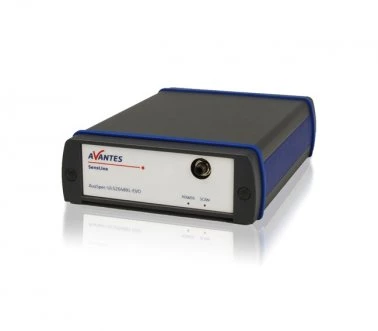Description
**AvaSpec-ULS2048XL-EVO SensLine High UV and NIR Sensitivity Back-thinned CCD Spectrometer** The AvaSpec-ULS2048XL-EVO spectrometer is a cutting-edge instrument designed for applications requiring high sensitivity in the UV and NIR ranges. This spectrometer stands out due to its exceptional quantum efficiency and high-speed performance. Unlike many traditional back-thinned CCD spectrometers that utilize two-dimensional arrays, the AvaSpec-ULS2048XL-EVO features large monolithic pixels measuring 14x500 microns.
This design choice significantly enhances efficiency, especially in the UV range of 200-400 nm and the NIR range of 950-1160 nm. One of the key features of the AvaSpec-ULS2048XL-EVO is its electronic shutter, which allows for integration times as short as 2 microseconds. This capability is crucial for applications requiring rapid data acquisition. Additionally, the spectrometer can be equipped with a detector collection lens to boost sensitivity by up to 60% when used with larger core fibers. This makes it an ideal choice for researchers and professionals who need precise and reliable spectral data.
The AvaSpec-ULS2048XL-EVO offers versatile configuration options, including a range of slit sizes, gratings, and fiber-optic entrance connectors (SMA or FC/PC). It also includes an order-sorting filter to minimize second-order effects and purge ports for deep-UV measurements. The integration of the AS7010 electronics board provides USB3 connectivity, which is ten times faster than USB2, as well as Gigabit Ethernet for enhanced signal processing. This ensures that data transfer to your PC is efficient, with scans completed in just 2 milliseconds. The spectrometer comes with AvaSoft-basic software, a USB cable, and a comprehensive manual, making it ready for immediate use.
AvaSpec-ULS2048CL-EVO UV 1800 Spectrometer
Specifications
| Monochromator Type: | Czerny-Turner |
|---|---|
| Effective Focal Length: | 75 mm |
| Diffraction Grating: | 1200 lines/mm |
| Grating Blaze Wavelength: | 250 nm |
| Spectral Range: | 200 – 450 nm |
| Spectral Resolution (Avg): | 0.37 nm |
Features
- High Sensitivity: The AvaSpec-ULS2048XL-EVO spectrometer features a back-thinned CCD with large monolithic pixels (14x500 microns) offering exceptional efficiency in the UV (200-400 nm) and NIR (950-1160 nm) ranges.
- Fast Integration Times: Equipped with an electronic shutter, this spectrometer enables integration times as low as 2 microseconds.
- Enhanced Sensitivity: Optional detector collection lens available, improving sensitivity by up to 60% when used with larger core fibers.
- Versatile Configurations: Offers a wide range of slit sizes, gratings, and can be configured with SMA or FC/PC fiber-optic entrance connectors.
- Advanced Electronics: Utilizes the AS7010 electronics board with USB3 (10x faster than USB2), Gigabit Ethernet, and improved signal processing.
- High-Speed Data Transfer: Capable of delivering a scan every 2 milliseconds via USB3 or Ethernet connection.
- Comprehensive Package: Comes with AvaSoft-basic software, USB cable, and an extensive manual.
Applications
- Environmental Monitoring: Utilize the AvaSpec-ULS2048XL-EVO for precise monitoring of air and water quality by detecting various chemical compounds and pollutants.
- Biomedical Research: Employ this spectrometer in laboratories for analyzing biological samples, including DNA, RNA, and proteins, by measuring absorbance and fluorescence.
- Pharmaceutical Development: Use the spectrometer for quality control and formulation development by analyzing the composition and concentration of pharmaceutical compounds.
- Food and Beverage Industry: Ensure quality and safety by analyzing ingredients and detecting contaminants in food and beverage products.
- Agricultural Applications: Monitor soil and plant health by analyzing nutrient content and detecting stress markers, improving crop management and yield.
- Material Science: Investigate the properties of materials such as polymers, metals, and semiconductors through spectroscopic analysis.
- Forensic Analysis: Aid in crime scene investigations by analyzing trace evidence, such as fibers and residues, to identify substances and materials.
- Art and Cultural Heritage: Analyze pigments and materials in artworks and historical artifacts for conservation and restoration purposes.
- Industrial Process Control: Enhance manufacturing processes by monitoring chemical reactions and ensuring the consistency of products.
- Optical Component Testing: Evaluate the performance of optical components, such as lenses and filters, by measuring their transmission and reflectance properties.
Frequently Asked Questions
What is the interface used for connection to a PC?
What is the resolution of the AvaSpec-ULS2048XL-EVO spectrometer?
What is the sensitivity of the AvaSpec-ULS2048XL-EVO spectrometer?
What is the integration time range of the AvaSpec-ULS2048XL-EVO spectrometer?
What is the wavelength range of the AvaSpec-ULS2048XL-EVO spectrometer?
Similar Products
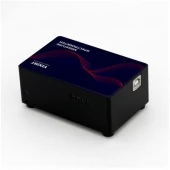
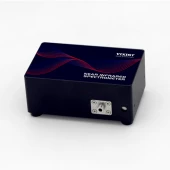
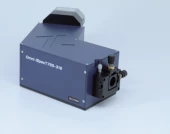
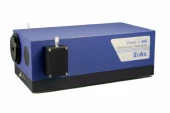
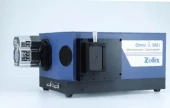
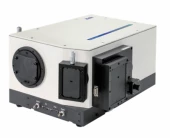
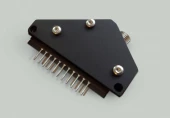
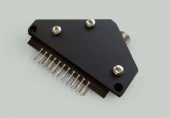
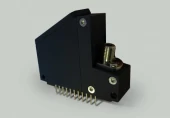
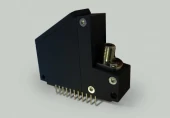
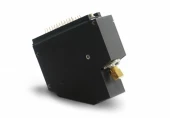
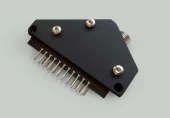
Your inquiry has been received.
Create an account by adding a password
Why create an account?
- Auto-complete inquiry forms
- View and manage all your past messages
- Save products to your favorites
- Close your account anytime — no hassle
